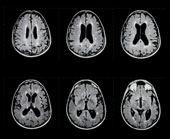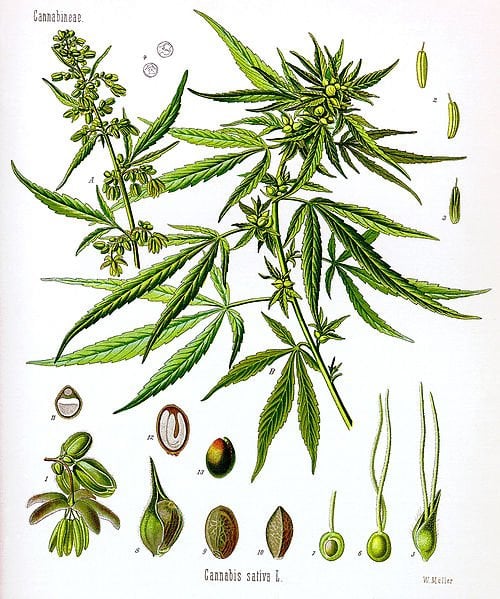
“Air pollution causes lung cancer, World Health Organization confirms” http://www.cbsnews.com/8301-204_162-57607955/air-pollution-causes-lung-cancer-world-health-organization-confirms/
“Marijuana May Fight Lung Tumors… active ingredient in marijuana may help combat lung cancer… In lab and mouse studies, the compound, known as THC, cut lung tumor growth in half and helped prevent the cancer from spreading…” http://www.cbsnews.com/2100-500368_162-2696726.html
“Lung cancer leads all cancer deaths” http://www.thespectrum.com/story/life/features/mesquite/2014/10/20/lung-cancer-leads-cancer-deaths/17640075/
“Air Pollution a Leading Cause of Cancer. The United Nation’s World Health Organization (WHO) has classified air pollution as a prime cause of cancer worldwide, especially in the case of lung cancer.” http://www.webmd.com/cancer/news/20131018/air-pollution-cancer
“Pot Smoking Not Linked to Lung Cancer. Study Shows No Increased Risk for Even the Heaviest Marijuana Smokers.” http://www.webmd.com/lung-cancer/news/20060523/pot-smoking-not-linked-to-lung-cancer
“Marijuana May Fight Lung Tumors… the active ingredient in marijuana may help combat lung cancer…”http://www.webmd.com/lung-cancer/news/20070417/marijuana-may-fight-lung-tumors
“WHO agency: Air pollution causes cancer. What many commuters choking on smog have long suspected has finally been scientifically validated: air pollution causes lung cancer.” http://www.abclocal.go.com/ktrk/story?section=news%2Fhealth&id=9290406
“Marijuana Compound May Fight Lung Cancer… Harvard University researchers have found that, in both laboratory and mouse studies, delta-tetrahydrocannabinol (THC) cuts tumor growth in half in common lung cancer while impeding the cancer’s ability to spread.”
http://abcnews.go.com/Health/Healthday/story?id=4506595&page=1
“Don’t Smoke? You Could Still Get Lung Cancer” http://health.clevelandclinic.org/2014/10/dont-smoke-you-could-still-get-lung-cancer/
“Radon No. 1 lung cancer cause in nonsmokers” http://www.rgj.com/story/life/wellness/2014/10/24/radon-lung-cancer-cause-nonsmokers/17866569/
“Air pollution causes lung cancer, World Health Organization says” http://articles.latimes.com/2013/oct/17/science/la-sci-sn-air-pollution-causes-lung-cancer-20131017
“Smog Tied to Higher Risk of Lung Cancer, Heart Failure” http://health.usnews.com/health-news/news/articles/2013/07/10/smog-tied-to-higher-risk-of-lung-cancer-heart-failure
“Mountaintop Removal Mining Dust Linked To Increased Risk Of Lung Cancer, According to Study” http://lungcancernewstoday.com/2014/10/20/mountaintop-removal-mining-dust-linked-increased-risk-lung-cancer-according-study/
“Study Shows Direct Connections Between Mountaintop Removal Dust Exposure and Lung Cancer” http://wfpl.org/post/study-shows-direct-connections-between-mountaintop-removal-dust-exposure-and-lung-cancer
“Compound in chili pepper slows lung cancer tumor growth. New laboratory research shows capsaicin decrease growth of an aggressive form of lung cancer.” http://www.teatronaturale.com/food-and-fun/health/4983-compound-in-chili-pepper-slows-lung-cancer-tumor-growth.htm
“Drinking alcohol may boost lung cancer risk” http://www.foodconsumer.org/newsite/Nutrition/Food/drinking_alcohol_and_lung_cancer_risk_1024110625.html
“Link Between Alcohol And Cancer Explained: Alcohol Activates Cellular Changes That Make Tumor Cells Spread” http://www.sciencedaily.com/releases/2009/10/091026172052.htm
“Groups seek to curb tobacco use in cancer patients… Tobacco use plays a role in 18 different cancers… Patients who use tobacco have worse outcomes and more difficult treatment… tobacco use decreases the effectiveness of chemotherapies and interferes with drug metabolism… data also shows that it decreases survival… we call on the oncology community… to provide cessation support to all cancer patients,” http://www.oncologypractice.com/oncologyreport/news/top-news/single-view/groups-seek-to-curb-tobacco-use-in-cancer-patients/1a87bf57bcccdadf01ae769c48eadce4.html
“Marijuana habit not linked to lung cancer” http://www.oncologypractice.com/oncologyreport/news/top-news/single-view/marijuana-habit-not-linked-to-lung-cancer/73840afd2cca226b9e6a9ddc7cb0d039.html
“Cannabis and tobacco smoke are not equally carcinogenic… Available scientific data, that examines the carcinogenic properties of inhaling smoke and its biological consequences, suggests reasons why tobacco smoke, but not cannabis smoke, may result in lung cancer… Furthermore, compounds found in cannabis have been shown to kill numerous cancer types including: lung cancer…” http://www.harmreductionjournal.com/content/2/1/21
“Tobacco Smoke Causes Lung Inflammation, Promotes Lung Cancer Growth” http://www.sciencedaily.com/releases/2010/01/100119121206.htm
“Marijuana Cuts Lung Cancer Tumor Growth In Half, Study Shows”
http://www.sciencedaily.com/releases/2007/04/070417193338.htm
“Delta–9 Tetrahydrocannabinol inhibits growth and metastasis of lung cancer” http://www.thctotalhealthcare.com/delta-9-tetrahydrocannabinol-inhibits-growth-and-metastasis-of-lung-cancer-harvard-university/
“Δ-9 Tetrahydrocannabinol inhibits growth and metastasis of lung cancer.” http://cancerres.aacrjournals.org/content/67/9_Supplement/4749.short
“Antineoplastic activity of cannabinoids. Lewis lung adenocarcinoma growth was retarded by the oral administration of delta-9-tetrahydrocannabinol, delta-8-tetrahydrocannabinol, and cannabinol (CBN)… Delta-9-THC, delta-8-THC, and cannabinol (CBN) all inhibited primary Lewis lung tumor growth….. All occur naturally in marihuana… these compounds readily cross the blood-brain barrier and do not possess many of the toxic manifestations of presently used cytotoxic agents…” http://www.ukcia.org/research/AntineoplasticActivityOfCannabinoids/index.php
“Antineoplastic activity of cannabinoids.” http://www.ncbi.nlm.nih.gov/pubmed/1159836
“Antineoplastic: A drug used to inhibit the growth and spread of cancerous cells.. a chemotherapeutic agent that controls or kills cancer cells…” http://medical-dictionary.thefreedictionary.com/antineoplastic
“The Inhibition of DNA Synthesis by Cannabinoids. Several of the cannabinoids found in marihuana have been shown to inhibit tumor growth and increase the life-span… our in vitro observations with these cannabinoids are supported by in vivo tumor inhibition studies… Δ9-trans-tetrahydrocannabinol demonstrated the least toxicity of all inhibitory cannabinoids in vivo…” http://cancerres.aacrjournals.org/content/36/1/95.short
“Inhibition: “arrest or restraint of a process… Something that restrains, blocks, or suppresses… (in chemistry) the stopping or slowing of the rate of a chemical reaction.” http://medical-dictionary.thefreedictionary.com/inhibition
“Effects of delta9-tetrahydrocannabinol in Lewis lung adenocarcinoma cells in tissue culture… We found a dose-related decrease in DNA synthesis in transformed cell cultures treated with delta9-tetrahydrocannabinol (delta9-THC)… delta9-THC inhibited DNA synthesis…” http://www.ncbi.nlm.nih.gov/pubmed/943561
“In vivo effects of cannabinoids on macromolecular biosynthesis in Lewis lung carcinomas. Cannabinoids represent a novel class of drugs active in increasing the life span mice carrying Lewis lung tumors and decreasing primary tumor size…” http://www.ncbi.nlm.nih.gov/pubmed/616322
“Anti-emetic efficacy and toxicity of nabilone, a synthetic cannabinoid, in lung cancer chemotherapy… Symptom scores were significantly better for patients on nabilone for nausea, retching and vomiting. Fewer subjects vomited with nabilone and the number of vomiting episodes was lower; no patients on nabilone required additional parenteral anti-emetic. More patients preferred nabilone for anti-emetic control… Nabilone is an effective oral anti-emetic drug for moderately toxic chemotherapy, but the range and unpredictability of its side-effects warrant caution in its use.” http://www.ncbi.nlm.nih.gov/pmc/articles/PMC2011510/
http://www.ncbi.nlm.nih.gov/pubmed/6254456
“Cannabidiol inhibits lung cancer cell invasion and metastasis via intercellular adhesion molecule-1.” http://www.ncbi.nlm.nih.gov/pubmed/22198381
“Cannabidiol inhibits cancer cell invasion via upregulation of tissue inhibitor of matrix metalloproteinases-1.” http://www.ncbi.nlm.nih.gov/pubmed/19914218
“Decrease of plasminogen activator inhibitor-1 may contribute to the anti-invasive action of cannabidiol on human lung cancer cells” http://www.ncbi.nlm.nih.gov/pubmed/20668920
“CYCLOOXYGENASE-2 AND PEROXISOME PROLIFERATOR ACTIVATED RECEPTOR γ CONFER CANNABIDIOL-INDUCED APOPTOSIS OF HUMAN LUNG CANCER CELLS.” http://www.ncbi.nlm.nih.gov/pubmed/23220503
“Apoptosis: programmed cell death at a molecular level.” http://www.ncbi.nlm.nih.gov/pubmed/12833244
“WHO agency says air pollution causes lung cancer” http://www.foxnews.com/health/2013/10/17/who-agency-says-air-pollution-causes-lung-cancer/
“Marijuana Does Not Raise Lung Cancer Risk” http://www.foxnews.com/story/0,2933,196678,00.html
“Marijuana May Fight Lung Tumors… marijuana may help combat lung cancer… In lab and mouse studies, the compound, known as THC, cut lung tumor growth in half and helped prevent the cancer from spreading, says Anju Preet, PhD, a Harvard University researcher in Boston…”http://www.foxnews.com/story/2007/04/18/marijuana-may-fight-lung-tumors/
“Air pollution causes lung cancer, WHO agency announces. Experts at the International Agency for Research on Cancer, an agency of the World Health Organization, have concluded that exposure to outdoor air pollution.causes lung cancer and increases the risk for bladder cancer.” http://www.nbcnews.com/video/nightly-news/53309399/#53309399
“Marijuana Compound Fights Cancer; Human Trials Next.
Research shows component in medical cannabis fights cancer.” http://www.nbcbayarea.com/news/local/Marijuana-Compound-Fights-Cancer-Human-Trials-Next-170406116.html
“The endocannabinoid system and cancer: therapeutic implication… Identification of safe and effective treatments to manage and improve cancer therapy is critical to improve quality of life and reduce unnecessary suffering in cancer patients. In this regard, cannabis-like compounds offer therapeutic potential for the treatment of… cancer… anti-cancer properties of cannabinoids…” http://www.ncbi.nlm.nih.gov/pmc/articles/PMC3165955/
“The endocannabinoid system in the cancer therapy: an overview.” http://www.ncbi.nlm.nih.gov/pubmed/21428888
“The endocannabinoid signaling system in cancer.” http://www.ncbi.nlm.nih.gov/pubmed/23602129
“Changes in the Endocannabinoid System May Give Insight into new and Effective Treatments for Cancer” http://www.ncbi.nlm.nih.gov/pmc/articles/PMC2791688/
“Endocannabinoid system modulation in cancer biology and therapy.” http://www.ncbi.nlm.nih.gov/pubmed/19559362
“The endocannabinoid system in cancer-potential therapeutic target?” http://www.ncbi.nlm.nih.gov/pubmed/18249558
“Targeting the endocannabinoid system for the treatment of cancer–a practical view.” http://www.ncbi.nlm.nih.gov/pubmed/20370711
“The endocannabinoid system and its therapeutic exploitation… since the discovery of cannabinoid receptors, the endocannabinoid system seems to hold even more promise for the future development of therapeutic drugs.” http://www.ncbi.nlm.nih.gov/pubmed/15340387
“The endocannabinoid system as a target for the development of new drugs for cancer therapy… evidence has accumulated indicating that stimulation of cannabinoid receptors by either THC or the endocannabinoids influence the intracellular events controlling the proliferation and apoptosis of numerous types of cancer cells, thereby leading to anti-tumour effects both in vitro and in vivo. This evidence is reviewed here and suggests that future anti-cancer therapy might be developed from our knowledge of how the endocannabinoid system controls the growth and metastasis of malignant cells.”
http://www.ncbi.nlm.nih.gov/pubmed/12723496
“Cannabinoid receptor systems: therapeutic targets for tumour intervention… there is now a genuine expectation that the manipulation of cannabinoid receptor systems may have therapeutic potential for a diverse range of human diseases… demonstrated antitumour actions of cannabinoids indicates possible avenues for the future development of cannabinoids as antitumour agents.”
http://www.ncbi.nlm.nih.gov/pubmed/14640910
“Cannabinoid-associated cell death mechanisms in tumor models… cannabinoids (the active components of Cannabis sativa)… in addition to their inhibitory effects on tumor growth and migration, angiogenesis and metastasis… these compounds induce different pathways of cell death… death mechanisms induced by cannabinoids… we analyze the pathways triggered by cannabinoids to induce apoptosis or autophagy… the results reported here suggest that the exploration of molecular mechanisms induced by cannabinoids in cancer cells can contribute to the development of safe and effective treatments in cancer therapy.” http://www.ncbi.nlm.nih.gov/pubmed/22614735
“Towards the use of cannabinoids as antitumour agents.. cannabinoids (the active components of marijuana and their derivatives) can reduce tumour growth and progression in animal models of cancer, in addition to their well-known palliative effects on some cancer-associated symptoms.”
http://www.ncbi.nlm.nih.gov/pubmed/22555283
“Non-small cell lung cancer (NSCLC) is the leading cause of cancer deaths worldwide…only limited therapeutic treatments are available. Hence, we investigated the role of cannabinoid receptors, CB1 and CB2, as novel therapeutic targets against NSCLC…. Overall, our results indicate a novel role for cannabinoid receptors CB1 and CB2 in NSCLC growth and metastasis… These results suggest that CB1 and CB2 could be used as novel therapeutic targets against NSCLC.”
http://www.ncbi.nlm.nih.gov/pmc/articles/PMC3025486/
“Cannabinoid receptors as therapeutic targets.”
http://www.ncbi.nlm.nih.gov/pubmed/16402900
“Inhibitory effects of cannabinoid CB1 receptor stimulation on tumor growth and metastatic spreading: actions on signals involved in angiogenesis and metastasis… Our findings indicate that CB1 receptor agonists might be used therapeutically to retard tumor growth in vivo by inhibiting at once tumor growth, angiogenesis, and metastasis.” http://www.ncbi.nlm.nih.gov/pubmed/12958205
“Targeting the endocannabinoid system with cannabinoid receptor agonists: pharmacological strategies and therapeutic possibilities. Human tissues express cannabinoid CB(1) and CB(2) receptors that can be activated by endogenously released ‘endocannabinoids’ or exogenously administered compounds in a manner that reduces the symptoms or opposes the underlying causes of several disorders in need of effective therapy. Three medicines that activate cannabinoid CB(1)/CB(2) receptors are now in the clinic: Cesamet (nabilone), Marinol (dronabinol; Δ(9)-tetrahydrocannabinol (Δ(9)-THC)) and Sativex (Δ(9)-THC with cannabidiol)… several possible additional therapeutic targets for cannabinoid receptor agonists. These include other kinds of pain, epilepsy, anxiety, depression, Parkinson’s and Huntington’s diseases, amyotrophic lateral sclerosis, stroke, CANCER, drug dependence, glaucoma, autoimmune uveitis, osteoporosis, sepsis, and hepatic, renal, intestinal and cardiovascular disorders.”
http://www.ncbi.nlm.nih.gov/pubmed/23108552
“Cannabinoid receptor agonists are mitochondrial inhibitors: a unified hypothesis of how cannabinoids modulate mitochondrial function and induce cell death. Time-lapse microscopy of human lung cancer cells showed t…hat the endogenous cannabinoid anandamide (AEA), the phyto-cannabinoid Delta-9-tetrahydrocannabinol (THC) and a synthetic cannabinoid HU 210 all caused morphological changes characteristic of apoptosis.” http://www.ncbi.nlm.nih.gov/pubmed/17931597
“Programmed Cell Death (Apoptosis)” http://www.ncbi.nlm.nih.gov/books/NBK26873/
“Δ9-Tetrahydrocannabinol inhibits epithelial growth factor-induced lung cancer cell migration in vitro as well as its growth and metastasis in vivo…Tumor samples from THC-treated animals revealed antiproliferative and antiangiogenic effects of THC. Our study suggests that cannabinoids like THC should be explored as novel therapeutic molecules in controlling the growth and metastasis of certain lung cancers.” http://www.nature.com/onc/journal/v27/n3/abs/1210641a.html
“Use of cannabinoid receptor agonists in cancer therapy as palliative and curative agents. Cannabinoids (the active components of Cannabis sativa)… evidence suggests that agonists of cannabinoid receptors expressed by tumour cells may offer a novel strategy to treat cancer… use of cannabinoid agonists for cancer therapy, not only as palliative but also as curative drugs.” http://www.ncbi.nlm.nih.gov/pubmed/19285265

 “A British researcher has found that cannabinoids, a term for chemicals derived from marijuana, can kill leukemia cells, and he expects clinical trials for new medications to begin soon.
“A British researcher has found that cannabinoids, a term for chemicals derived from marijuana, can kill leukemia cells, and he expects clinical trials for new medications to begin soon.






